Saint Helier - Saint Hélyi - Saint Hélier
The village of St. Hellier lies in the valley on the edge of the Forest of Eawy in Haute-Normandie. Although the spelling of the name may be different, it is indeed the same saint who brought Christianity to Jersey.
Legend states that as Helier was passing through the forest, he came across a mighty oak which presumably was regarded as sacred by the people of the area. Helier miraculously brought forth a spring from the ground which was discovered to have healing properties.
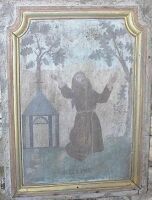
The village grew up around the spring and the small chapel founded at the site.
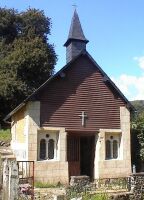
The history of the chapel is obscure, but it seems that it was rebuilt in 1852 and that pilgrims and cure-seekers continued coming into the 1930s. Older members of the population of surrounding areas recall being brought to the spring as children. Ex votos in the chapel commemorate past cures effected through St. Helier's spring.
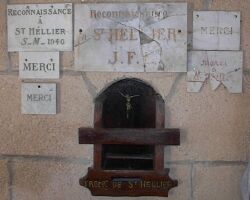
The chapel subsequently fell into disuse and went to ruin - although isolated visitors continued to pick their way across the ruins to gain access to the healing waters.
By the late 1980s, what was left of the chapel was being used as a cowshed - but the new owner who acquired the property on which the spring rises decided to restore the chapel.

Ring at the second gateway on the left going downhill from the church and ask politely if you may visit the chapel. The owners are accustomed to open the chapel for pilgrims and those in need of cure.
The waters are especially noted for their effects on skin conditions and eye complaints.
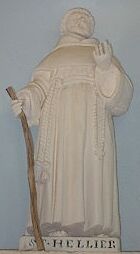
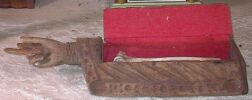
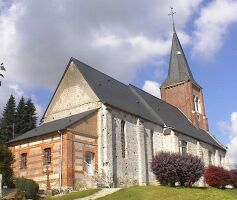
|
Par contre, en Seine-Maritime, à Saint-Hellier (canton de Bellencombre), à l'initiative d'un particulier la chapelle Saint-Hellier située à quelque deux cents mètres de l'église, a été restaurée tout récemment. Elle se présente aujourd'hui comme un superbe petit édifice à l'intérieur duquel une source miraculeuse surgit du sol pour être entourée d'un joli mur. Les pèlerins individuels peuvent venir prier saint Hellier (l'orthographe du nom est sans importance) et ils n'y manquent pas. Les mères amènent leurs enfants. Au moyen de linges blancs, elles lavent les parties de la peau atteintes par le mal (ici le saint est dermatologue), prient, allument un cierge et laissent sur place les linges. Parfois, c'est un membre qui est plongé dans l'eau bienfaisante. Les Saints qui guérissent en Normandie Hippolyte Gancel 1998 |

R'tou à la page d'siez-mé | Back to home page
E-mail: geraint@societe-jersiaise.org